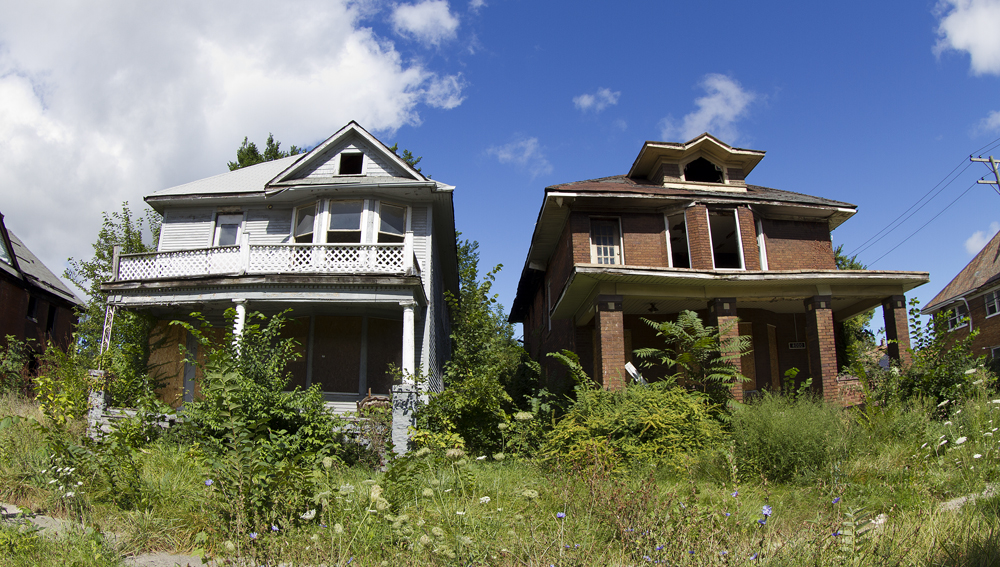In Ann Arbor, it can be all too easy to forget the wider state and region we inhabit as students at the University of Michigan. It is affluent, educated, and diverse — at least ethnically, racially, and sexually. If it were not for the typically midwestern weather, you could be forgiven for mistaking Ann Arbor, Michigan, for Berkeley, California.
The 2024 election cycle offers timely reminders of the history and political volatility of Michigan and the Midwest. This year, the Michigan Review has been fortunate to be able to cover the 2024 election cycle. We have reported on campaign events of presidential candidates Robert F. Kennedy Jr., Donald Trump, and Nikki Haley. There is a reason the road to the White House runs through Michigan and every serious presidential candidate feels compelled to host rallies and tailor their campaign to the political interests of the people here.
The Midwest, or the Old Northwest, once embodied the very best of our great nation. One of the early republic’s most important legislative accomplishments was the Northwest Ordinance, in 1787. The act created the Northwest Territory, a vast stretch of land ripe for development and settlement, and where slavery was outlawed. The pioneering frontier spirit of adventure allowed the people of the Northwest Territory to embrace entrepreneurship, industry, optimism, thrift, and virtue unburdened by the feudalism and wars of religion that had shackled their European ancestors. It is no coincidence that an inscription from the Northwest Ordinance adorns the facade of Angell Hall: “Religion, morality, and knowledge, being necessary to good government and the happiness of mankind, schools and the means of education shall forever be encouraged.” The inscription reflects the cardinal values of civic-mindedness and public virtue that were instrumental in the development of the Midwest.
During the Second Industrial Revolution, economic and population growth seemed to indicate that the Midwest was forever ensconcing itself as the productive heartland of the United States. The metropolises of the Midwest became the nexus of the nation’s commercial networks. No city better chronicles the rise and anything-but-inevitable fall of the Midwest than Detroit.
Detroit’s access to the Great Lakes made it a natural hub of the nineteenth century’s budding manufacturing, shipping service, and shipbuilding industries.
After Henry Ford founded the Ford Motor Company, in Detroit in 1903, the city’s growth compounded. General Motors and Chrysler soon followed in 1908 and 1925, respectively. The automobile capital of the world, Detroit led the world in commercial shipping via the Detroit River and became the fourth most populous city in the United States.
There was, of course, a dark side to Detroit’s development. Contentious labor disputes rocked the city. Ethnic, racial, and religious discrimination was rampant and only worsened during the Great Migration. Detroit’s heyday passed. Its population peaked in the 1950 census, at 1,849,568 people. During the postwar era, and especially after 1970, a new neoliberal consensus meant that the halcyon days of midwestern growth were over.
Many of the economic and international conditions of midcentury America that allowed Detroit and the Midwest to grow and prosper may indeed be irreproducible, but conscious policy decisions nonetheless contributed to their denouement.
Once-reliable, well-paying jobs in the automobile industry were shipped overseas. The entrance of Japan and South Korea into the automobile market accelerated this trend in the 1980s.. The tariffs that had protected the manufacturing sector, upon which Detroit and Michigan had become reliant, were slashed out of a zealous fealty to free trade that would have made Gladstone’s Liberals blush. Wages that had long offered workers without college degrees the ability to provide for their families and financial security were continuously debased by the influx of cheap, unskilled labor.
Boarded-up businesses, uprooted communities, and dilapidated churches and houses in once-thriving areas offer a poignant reminder of the path the region has trod since the Northwest Ordinance. Detroit’s population now sits at a meager 639,111 according to the 2020 census.
Is the current political volatility in the Upper Midwest — often condescendingly referred to as the Rust Belt — so shocking when considered in the context of the region’s history? America’s chattering classes reacted with horror when Donald Trump narrowly carried Michigan in 2016. They respond with stunned silence, perhaps evincing purposeful denial or willful ignorance — at his competitiveness and dominance in the Michigan polls in 2024. Why, they seem to ask, would people in Michigan vote for a candidate running on a platform of opposition to free trade and economic populism? Perhaps if they considered the history of Detroit, Michigan, and the Midwest, it would not be so mysterious.
